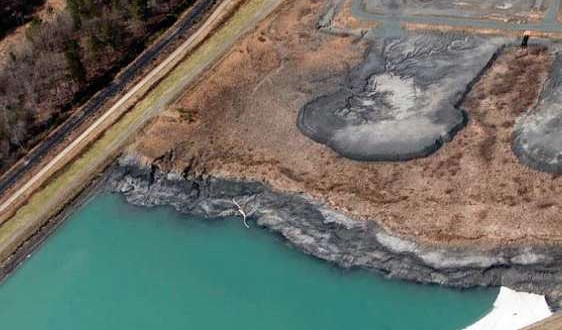Photographic evidence has revealed that a Kentucky utility company has been dumping toxic coal ash wastewater into the Ohio River. Time-lapse photos and satellite images prove that Louisville Gas & Electric Co. has been violating its Clean Water Act permit almost daily for at least the last five years. The lawsuit calls for LG&E to pay $68 million in fines.
The revelation comes less than two months after the Dan River disaster, where at least 30,000 tons of coal ash spilled from another of Duke Energy’s toxic coal ash lagoons. The pumping also came just days before a federal grand jury convenes in Raleigh to hear evidence in a criminal investigation of Duke Energy, the North Carolina Dept. of Environment and Natural Resources (DENR) and the handling of coal ash.
In these revealing stories in Sunday’s New York Times and Monday’s Los Angeles Times, Duke Energy admitted its workers were pumping coal ash wastewater out of a toxic wastewater pond and into a canal which drains into the Cape Fear River. The Cape Fear River is a source of public drinking water for residents in Fayetteville, Sanford, Dunn, Harnett County, Fort Bragg and Wilmington.
Even more startling, Duke Energy described the pumping of coal ash wastewater into a watershed as part of “routine maintenance.” The New York Times quoted Duke Energy spokesman Jeff Brooks as saying: “They’re lowering the water to conduct the maintenance they need to.” According to the New York Times, Duke claims it notified state regulators—a claim that was contradicted by officials with DENR.
Duke Energy cannot lawfully discharge any pollutant to a waterway without a proper permit in place.
“To label the secret, unmitigated, intentional discharge of untold amounts of highly toxic wastewater as ‘routine maintenance’ seems ludicrous,” said Peter Harrison of the Waterkeeper Alliance. “Here, Duke Energy has admitted that it deliberately emptied the contents of its ash ponds into the Cape Fear River watershed, just weeks after decimating at least 70 miles of the Dan River with its coal ash, and just days before it will appear in front of a federal grand jury for its suspected criminal activity related to its coal ash.”
DENR has indicated that Duke did not notify the agency prior to pumping the ponds, and that regulators noticed the pumping during a site visit on an unspecified day last week. “If DENR did not authorize Duke’s pumping, it would show an appalling disregard for the law and the welfare of North Carolinians,” Harrison added.
Cape Fear Riverkeeper Kemp Burdette said, “I am gravely concerned that neither Duke nor DENR gave any public notice that untold gallons of concentrated untreated coal ash waste was deliberately dumped into the Cape Fear watershed. Hundreds of thousands of North Carolinians rely on the Cape Fear river for drinking water, fishing and swimming. We do not want heavy metals from coal ash in our river.”
Waterkeeper Alliance Global Coal Campaign Coordinator Donna Lisenby said, “Duke never obtained an official modification of its NPDES permit to allow the discharge the highly concentrated coal ash waste water from the bottom of their ponds into the Cape Fear river watershed—if it had happened through open channels, the public would have had a chance to object. This was either illegal, unilateral action by Duke—or a quiet backroom deal with DENR. There is no evidence that any valid, publicly available permit allows them to discharge untold gallons of untreated concentrated coal ash waste water. Duke Energy should provide the specific language from the permit they claim allowed them to discharge highly concentrated untreated coal ash waste water into a standing body of water with almost no flow to dilute it.”
Press Releases/Agencies/Canadajournal
 Canada Journal – News of the World Articles and videos to bring you the biggest Canadian news stories from across the country every day
Canada Journal – News of the World Articles and videos to bring you the biggest Canadian news stories from across the country every day



